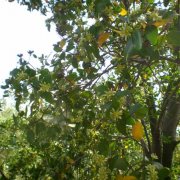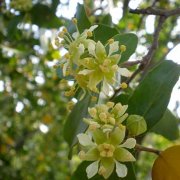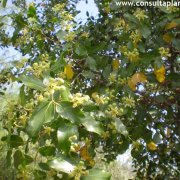Care of the tree Quillaja saponaria or Soap bark tree |
|
The genus Quillaja, family Quillajaceae, includes 2 species of trees native to Chile, Brazil and Argentina. The species are: Quillaja saponaria and Quillaja brasiliensis. Common names: Soap bark tree, Soapbark. This species is native to central Chile. They are evergreen trees or shrubs with erect bearing and hanging branches that reach 20 meters (65.6 feet) in height. The leaves are 5 cm (1.96") long, leathery and bright green. They produce abundant cream-colored, star-shaped flowers, but without aroma. They bloom from mid-spring to mid-summer. The curious fruits have a star shape. Soap bark tree is used in gardens and public parks as isolated specimens. The bark is rich in saponins that are used as a detergent. Quillaja saponaria needs full sun exposure. It resists frost down to -10 ºC (14 ºF). Soapbark grows in any type of soil that has good drainage. Water regularly but with little water, waiting a couple of days with the substrate dry before watering again; it resists drought well. Fertilize with compost at the time of planting in its final place and then every year coinciding with the general fertilizer of the garden. Soap bark tree can be pruned in late winter to keep them compact and guide growth. Quillaja saponaria it's a tree quite resistant to the usual pests and diseases; it's sensitive to excess moisture. Soapbark is propagated by cuttings or from seeds that germinate in a week. |
Images of the tree Quillaja saponaria or Soap bark tree |
Find plants
Quillaja saponaria or Soap bark tree | Care and Growing
© 2025 FavThemes


